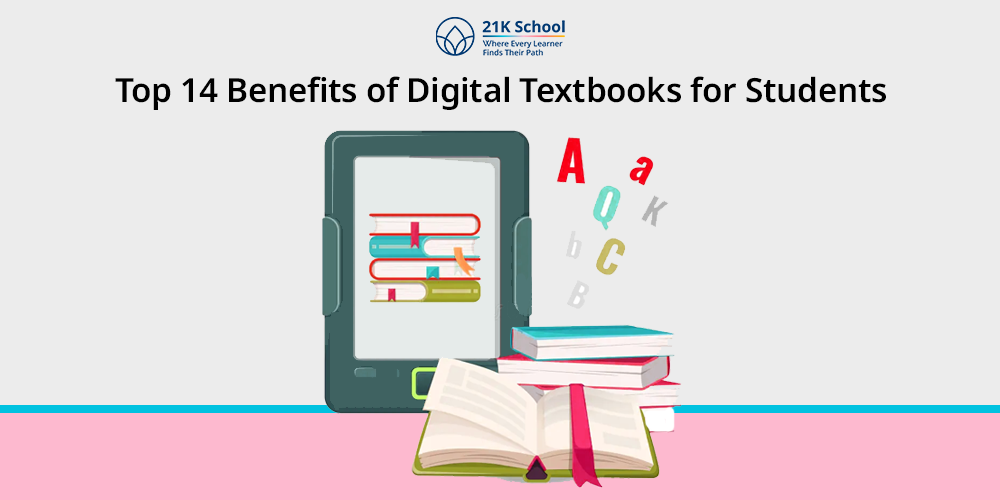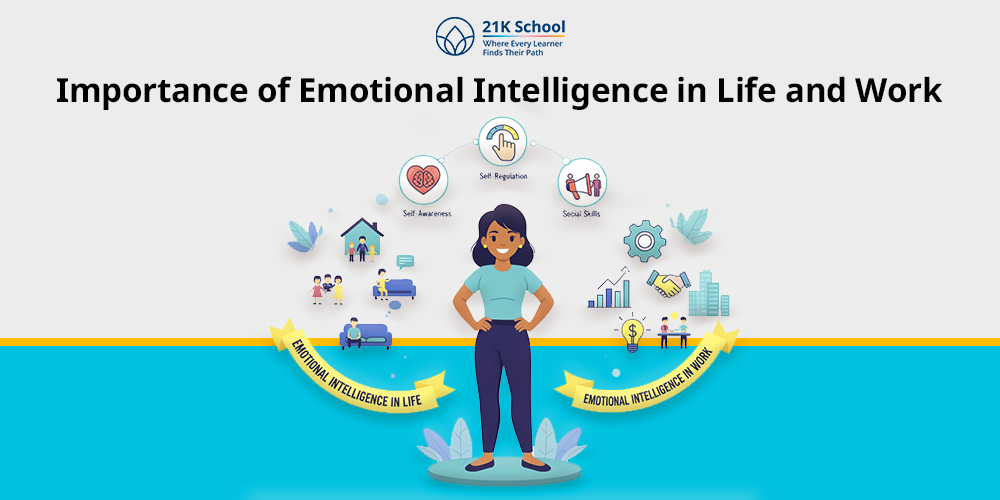
With time learning using various interactive approaches to improve student engagement. For continuous learning tools like digital textbooks, smartboard etc are excessively used.
Digital textbooks are one of the most popular and effective tools used by schools, facilitators and students.
Instead of traditional textbooks which need extra care, space and repurchasing issues, digital textbooks are more affordable, accessible and capable of modern education needs.
In this blog we will understand the top 14 benefits of digital textbooks for students in detail.
What are Digital Textbooks?
Digital textbooks are today’s need, also famous with the name “e-textbooks” or “electronic textbooks”. It is an online version of textbooks which students can avail.
Digital textbooks are designed similar to traditional printed textbooks for educational purposes . However, it comes with additional features like audio, video, hyperlinks etc.
These electronic textbooks are commonly available in many online platforms and learners can access them via laptops, tablets, e-readers, and smartphones.
14 Benefits of Digital Textbooks for Students
To understand the reason why one should have e-textbooks here’s top 14 benefits of digital textbooks for students:
1. Cost Savings
The availability of the free digital textbooks are one of the affordable options for learners who are unable to access physical copy due to their high costs.
Printed textbooks are costly while several digital textbooks are cheaper and sometimes free through open educational resources.
Students having budget constraints can access all the needful material online at one place.
2. Accessibility
Digital textbooks don’t have any boundaries set, students can access anytime and anywhere from school, cafe to home and even garden.
The remote access helps them to download and read the offline version without internet or distraction.
Learners can adjust the font size, color, writing style etc to learn effectively. People with learning difficulties can also access e-textbooks.
3. Interactive Learning
E-textbooks also offer interactive learning via integrated multimedia elements.
Various features like videos, audio clips, quizzes, and animations help learners to pay attention in learning the concepts and memorising.
For example, students in class 10th can access biology e-textbooks to learn from the 3D model of the human heart.
4. Environmentally Friendly
As compared to digital textbooks, physical books need paper that comes from trees, using ink, and pollution. It is a less environmentally friendly approach.
Several educational institutions are also preferring digital textbooks to reduce carbon footprint in a specific way. By this way learners take the step of sustainability and eco-friendly measures to save the environment.
However, the secret here is to manage the e-waste created by these books for enhancing its best benefits.
5. Collaboration
Digital textbooks promote collaboration learning and peer-to-peer education which help in teachers and students interaction .
Many ebooks offer facilities like sharing notes, highlight passages, and discuss sections in real-time.
This directly helps them to build strong community and academic growth.
6. Search Functionality
With printed textbooks learners are often stuck on difficult works, paragraphs or chapters which are time consuming tasks.
But not now because digital textbooks’ search features are easy to access in one click which help learners to locate keywords, definitions, or chapters in seconds.
This will save time, money and extra effort.
7. Convenient Access
Portability is one of the most beneficial features of digital textbooks. Students who carry books while traveling or in peers’ houses can take a single device or access from other’s devices.
This makes learning flexible, convenient and improves study habits .
8. Autodidacticism
Autodidacticism means self-learning. With digital textbooks students can self-learn or independently learn at their own pace, ways and technique.
By using diagrams, chapter quizzes, audio books, and video learning one can learn freely.
This promotes autodidacticism and enhances the ability of lifelong learning .
9. Easy Updates
Printed textbooks are often changed, especially experiments, dates or due to updated syllabus . This leads to buying an updated version.
However, using digital textbooks ensures learners read the most updated points without repurchasing.
The self-updating part of e-textbooks help learners to gain accurate knowledge/ latest information with buying new.
10. Data Analytics
There are many digital textbooks that do data analytics while learning.
It means it tracks learners’ reading progress, highlights learning patterns, and identifies areas of struggles.
These data are used by parents and teachers to understand the progress of learners and take needful steps to guide them.
11. Increased Engagement
Digital textbooks are designed and continuously updated to increase student engagement .
By adding gamification learning , animations, and interactive quizzes etc creators make it easy to access and interact with different age groups.
12. Sustainability
Digital textbooks support sustainability in education . By reducing physical supply chains, minimising storage issues, schools and facilitators share the idea to save time, money and storage problems.
This leads to a better future for upcoming generations.
13. Up-to-Date Information
Up-to-date information, especially related to subjects and concepts, is important to get good marks in examinations .
Using outdated textbooks can negatively impact learning and development.
Digital textbooks ensure learners always study relevant and accurate information to get the desired results in exams.
14. Multiple Device Compatibility
One of the benefits of digital textbooks is it has multiple device compatibility.
Students can seamlessly use any or all kinds of devices from laptop to smartphone to learn. This flexible learning ensures stress free interactive education.
Conclusion
Digital or e-textbooks are not just a replacement for traditional textbooks for reading. It is an effective way of learning without distraction.
It offers various benefits from cost savings and accessibility to interactive features, easy updates to sustainability. With time technology in education
ensures smooth learning.
Choose the more convenient option which helps students to perform better, smarter, eco-friendly, and more effective way to learn.


